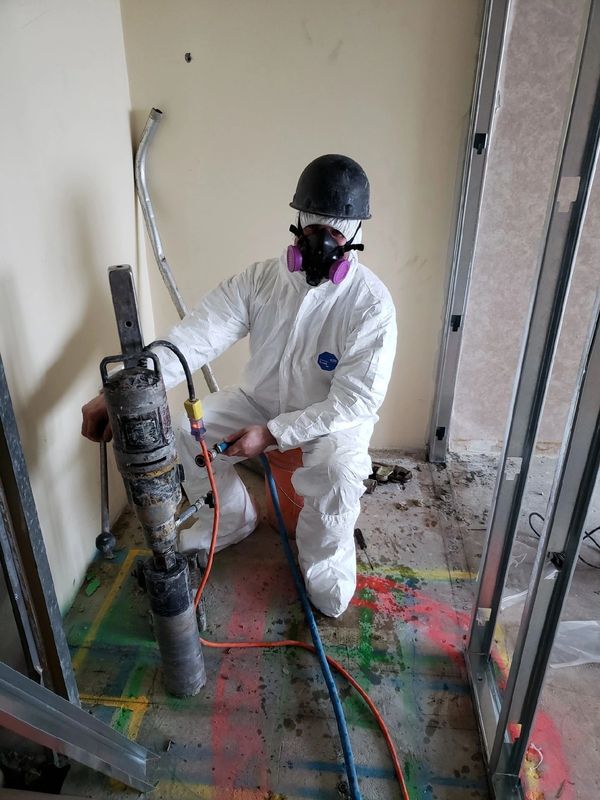Neighborhood RainierGPR Service Areas for Accuracy Concrete Scanning
Neighborhood RainierGPR Service Areas for Accuracy Concrete Scanning
Blog Article
Enhancing Task Preparation and Execution Via Advanced Concrete Scanning Strategies
In the realm of job preparation and foresight, accuracy and execution are important components that can make the difference between success and obstacles. Advanced concrete scanning methods have become an advanced tool readied to elevate the requirements of job monitoring within the construction market. By utilizing cutting-edge technology, these techniques provide a peek right into the structural integrity of a structure even before the first brick is laid. The implications of such innovations are extensive, promising a standard change in just how jobs are come close to and delivered.
Benefits of Advanced Concrete Scanning Strategies

Improved Accuracy in Project Analyses
Enhancing job evaluations through sophisticated concrete scanning methods substantially enhances the precision and reliability of building examinations. By utilizing sophisticated scanning modern technologies such as ground-penetrating radar (GPR) and 3D imaging, project teams can now acquire comprehensive insights into the problem of concrete frameworks, recognizing potential problems or weak points that may not be visible to the nude eye. This boosted degree of precision in task assessments allows building specialists to make more enlightened choices relating to repair service and maintenance approaches, leading to improved general project outcomes.
Furthermore, the increased precision in job evaluations accomplished via advanced concrete scanning strategies aids in reducing the risk of unexpected problems during the building stage. By proactively discovering covert abnormalities within concrete structures, such as rebar rust or spaces, job groups can attend to these concerns at an early stage, staying clear of costly hold-ups and revamp later in the project lifecycle. Eventually, the boosted accuracy in task evaluations assisted in by innovative concrete scanning strategies adds to higher performance, cost-effectiveness, and top quality in construction projects.
Early Recognition of Architectural Obstacles
Very early discovery of structural difficulties plays an important function in making sure the honesty and safety of concrete frameworks throughout the building process. Recognizing potential concerns at a very early phase permits prompt treatment, stopping expensive rework, schedule hold-ups, and safety threats. Advanced concrete scanning methods, such as ground-penetrating radar (GPR) and 3D imaging, enable task groups to discover concealed defects, gaps, reinforcement design inconsistencies, and various other anomalies that could jeopardize the structure's stability.
By implementing these strategies throughout the preparation and execution phases, construction experts can proactively deal with architectural obstacles prior to they escalate into significant troubles. For example, identifying poor concrete cover over support bars at an early stage can stop corrosion and structural weakening in the future - RainierGPR Service Areas. Furthermore, recognizing variants in concrete density or thickness can help maximize material use and make certain uniform stamina properties throughout the framework

Ultimately, very early recognition of structural challenges through advanced concrete scanning not only improves the overall quality and resilience of the building however also contributes to a much safer developed setting for individuals and residents.
Boosted Safety Procedures in Building And Construction
The implementation of durable safety protocols is essential in the construction industry to redirected here minimize dangers and protect the well-being of stakeholders and employees. To enhance security steps, building firms are progressively adopting technological innovations such as wearable tools that monitor employees' vital indicators and discover possible health issues in real-time. By focusing on safety and security through the unification of innovative innovations and thorough training programs, building tasks can significantly lower crashes reference and develop a safe and secure working environment for all entailed.
Streamlining Job Monitoring Processes
To optimize operational performance and make sure task success in the building sector, an emphasis on streamlining task monitoring processes is vital. By carrying out reliable task management processes, construction tasks can minimize delays, reduce prices, and enhance general productivity. One vital element of enhancing job monitoring is using advanced innovations such as Building Information Modeling (BIM) software program, which allows real-time partnership, clash discovery, and accurate task scheduling. Furthermore, the fostering of cloud-based project monitoring systems permits smooth communication among employee, instant access to job information, and the capability to track progress in real-time.

Final Thought
To conclude, the application of sophisticated concrete scanning techniques offers countless benefits for task preparation and execution. These techniques provide enhanced accuracy in task assessments, early identification of structural difficulties, enhanced safety measures in building, and streamlined project monitoring procedures. Incorporating these approaches into project process can eventually result in much more effective and effective results in building and construction tasks.
Eventually, the enhanced precision in project assessments assisted in by innovative concrete scanning methods adds to higher performance, cost-effectiveness, and quality in construction jobs. RainierGPR Service Areas.
To enhance functional performance and make sure project success in the building sector, a focus on simplifying task administration procedures is essential. By implementing reliable job management processes, construction jobs can lessen hold-ups, lower prices, and improve overall productivity. By enhancing project monitoring processes with technology combination, clear communication, and data-driven approaches, building tasks can achieve higher performance, cost-effectiveness, and successful end results.
These techniques offer better precision in job assessments, early recognition of structural challenges, boosted safety and security steps in building, and structured job monitoring procedures.
Report this page